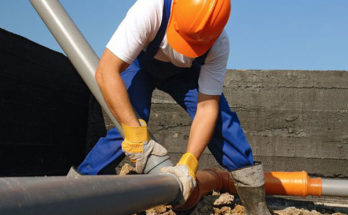Contemplating the purchase of a strength training machine for your home but overwhelmed by the variety of models available? Let’s delve into the crucial aspects of the advantages, contraindications, and selection criteria of this sports equipment, illuminating the path to your ideal home gym setup.
The Benefits of Strength Training Machines
Strength training equipment boasts numerous health and aesthetic benefits for athletes, including:
- Development of strength, flexibility, and endurance;
- Muscle mass augmentation;
- Improvement of respiratory and cardiovascular systems;
- Body sculpting;
- Subcutaneous fat burning;
- Weight loss;
- Stress relief;
- Sleep normalization.
Advantages of Strength Training Machines
Strength trainers offer several advantages for workouts. They are versatile, accommodating athletes of any fitness level with a wide range of load options. The extensive functionality of these machines allows for a variety of exercises to target any muscle group. Intelligent design ensures training safety, with proper biomechanics and smooth movements reducing the strain on joints and ligaments. The big outlier is on the Gear Fit website: https://www.gearforfit.com/
Drawbacks of Strength Training Machines
One notable downside is their size. Many models are bulky, heavy, and require a significant amount of space (at least 5 m²), making them unsuitable for apartments with limited room.
Improper exercise techniques on strength training machines can lead to injuries. Without precise movement control and adherence to safety rules, athletes risk harming their health, such as sustaining strains, dislocations, or fractures.
Some models require additional equipment (plates, bars, benches, etc.), increasing the overall cost of your sports setup.
Contraindications for Using Strength Training Machines
Before embarking on a workout with a strength machine, familiarize yourself with the contraindications. We strongly advise against strength exercises in cases of:
- Cardiovascular diseases;
- Hemorrhoids or hernia;
- Vision impairments;
- Respiratory system diseases;
- Musculoskeletal disorders;
- Postoperative recovery;
- Pregnancy or postpartum period;
- Menstruation;
- Varicose veins;
- Infections and inflammation;
- Elevated temperature.
Consulting a doctor before training with a strength machine is recommended to ensure you do not jeopardize your health and are confident of positive outcomes.
Choosing a Strength Training Machine
When selecting a strength trainer, pay attention to its type. Strength equipment is categorized into complexes, Smith machines, power racks, and squat stands, each with unique characteristics.
Multi-station Strength Complex

Multi-station complexes are versatile trainers combining several workout zones for different muscle groups. The more features a station has, the higher its price.
Advantages include even the simplest and most budget-friendly models providing a comprehensive workout for nearly the entire body. However, they are characterized by significant weight and dimensions.
Considerations for purchase include the material of the weight stack, the addition of weight for muscle mass growth, weight ratio for different pulley groups, and additional features like arm curl pads, leg press options, pull-up bars for vertical presses, and more. Bench adjustability and cable strength (minimum breakage resistance of 700 kg, optimally 900 kg) are also important for quality, safety, and durability.
Smith Machine

The Smith machine features a vertical metal frame with a barbell on guides and limiters, facilitating exercises like bench presses and squats with vertical movements.
Advantages include safety due to the attached barbell, providing smooth and natural movements. However, the limitation to vertical movements means many strength exercises are not possible with this machine. Also, weight plates for the Smith machine often need to be purchased separately.
Power Rack
A power rack, unlike the Smith machine, does not include an attached barbell, offering more freedom of movement and engaging stabilizer muscles. However, its large size requires ample space.
Comparing Home Gym Equipment: Multi-station Complexes, Smith Machines, and Power Racks
| Feature | Multi-station Complex | Smith Machine | Power Rack |
|---|---|---|---|
| Description | Combines several workout zones for different muscle groups in one machine. | A vertical frame with a barbell on guides for controlled vertical movements. | A metal frame allowing for free-weight exercises without movement restrictions. |
| Advantages | – Comprehensive body workout – Suitable for all fitness levels – Safety and convenience |
– Safe for solo workouts due to fixed barbell path – Precise load control – Ideal for beginners and rehabilitation |
– Versatile exercises – Engages stabilizer muscles <br> – Customizable setup |
| Size & Space Requirement | Large; requires significant space (at least 5 m²). | Medium; less space required than multi-station complexes but still bulky. | Large; similar space requirement to multi-station complexes, but layout can be more adaptable. |
| Exercise Variety | High; designed to target all major muscle groups with various built-in stations. | Moderate; limited to exercises that involve vertical movements. | High; allows for a wide range of free-weight exercises without movement restriction. |
| Weight Adjustment | Typically uses a pin-selected weight stack; easy to change resistance. | Weight plates must be manually added or removed; offers precise control over load. | Depends on available weights; free weights (plates) are used for adjustment. |
| Safety | High; machines are designed with safety in mind, reducing risk of incorrect form. | High; the fixed path of the barbell minimizes incorrect form and injury risk. | Moderate to High; safety depends on correct use and, in some cases, the presence of a spotter. |
| Additional Equipment | Minimal; most exercises can be performed with what’s built into the station. | Often requires additional weight plates. | May require additional accessories like a bench, weights, and bars for full functionality. |
| Considerations | – Price correlates with features and quality – Requires assembly and space | – Vertical movement limitation – Additional costs for weight plates |
– Versatility may require additional purchase of accessories – Requires knowledge of proper form for safety |
In Summary
Armed with these insights, finding the right strength training machine for your home becomes a more navigable task. Whether you opt for a multi-station complex, a Smith machine, or a power rack, consider your space, fitness goals, and the specific features of each type to ensure a safe, effective, and enjoyable workout experience.




